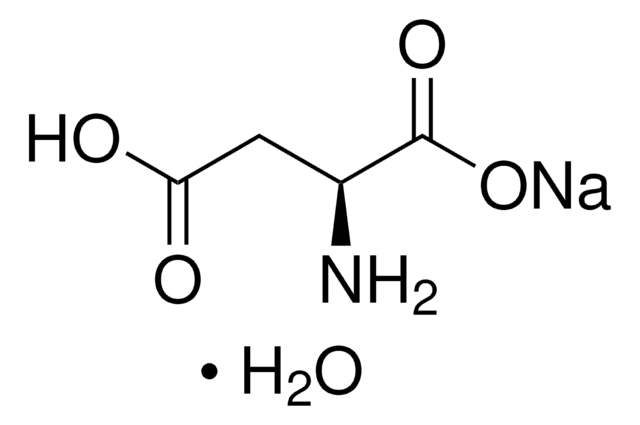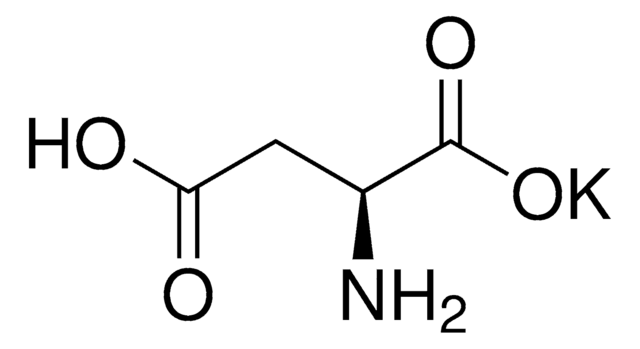A9256
Ácido L-aspártico
≥98% (HPLC)
Sinónimos:
Ácido (S)-(+)-aminosuccínico, Ácido (S-aminobutanodioico
About This Item
Productos recomendados
Nombre del producto
Ácido L-aspártico, reagent grade, ≥98% (HPLC)
grade
reagent grade
Quality Level
assay
≥98% (HPLC)
form
powder, crystals or chunks
color
white to off-white
mp
>300 °C (dec.) (lit.)
solubility
H2O: 5 mg/mL
0.5 M HCl: 50 mg/mL (with heat)
1 M NaOH: 50 mg/mL
SMILES string
N[C@@H](CC(O)=O)C(O)=O
InChI
1S/C4H7NO4/c5-2(4(8)9)1-3(6)7/h2H,1,5H2,(H,6,7)(H,8,9)/t2-/m0/s1
InChI key
CKLJMWTZIZZHCS-REOHCLBHSA-N
Gene Information
human ... CA1(759) , CA2(760)
rat ... Grin2a(24409)
¿Está buscando productos similares? Visita Guía de comparación de productos
Categorías relacionadas
Application
Biochem/physiol Actions
Storage Class
11 - Combustible Solids
wgk_germany
WGK 1
flash_point_f
Not applicable
flash_point_c
Not applicable
ppe
dust mask type N95 (US), Eyeshields, Gloves
Elija entre una de las versiones más recientes:
¿Ya tiene este producto?
Encuentre la documentación para los productos que ha comprado recientemente en la Biblioteca de documentos.
Los clientes también vieron
Chromatograms
application for HPLCapplication for HPLCNuestro equipo de científicos tiene experiencia en todas las áreas de investigación: Ciencias de la vida, Ciencia de los materiales, Síntesis química, Cromatografía, Analítica y muchas otras.
Póngase en contacto con el Servicio técnico







